Plant a Rain Garden in Your Yard
Updated: Jan. 23, 2024
Choose a soggy spot in the yard and plant a rain garden. With a little planning, you can make better use of the water nature provides.
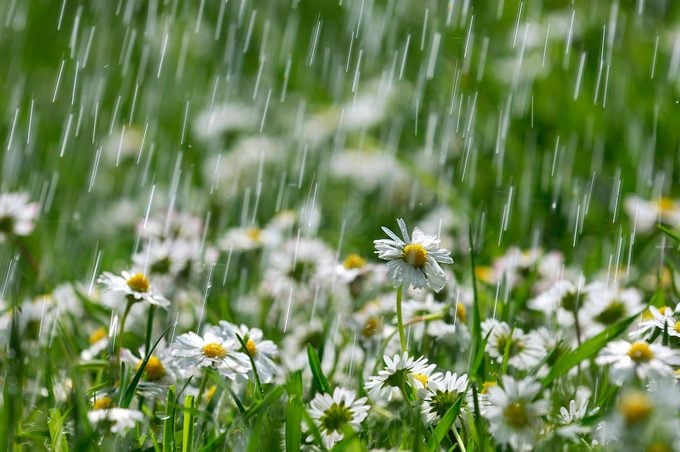
Water—it’s one of the most essential, beneficial and frustrating assets for gardeners throughout the country. At any given time, there seems to be either too much of it or not enough. So what’s the solution? Plant a rain garden!
On This Page
Rain Garden Benefits
No, a rain garden won’t necessarily solve all your planting problems, but it’s one of the most attractive and effective ways to manage inconsistent rainfall in your backyard. The rewards are almost endless: It reduces the risk of flooding and overloading storm sewers, it allows plant roots and soil to filter out impurities before the water goes back into the ground, and it’s just plain good for the environment.
While most trees, grasses and other plants naturally help intercept rainwater, rain gardens can soak up as much as 30 percent more water than conventional lawns. If planned right, they also provide a natural habitat for birds, as well as butterflies and other helpful insects. So start planning your rain garden now, and put rainwater to work for you.
Check out the top 10 water wise plants that will thrive in a dry spell.
Planning Your Rain Garden
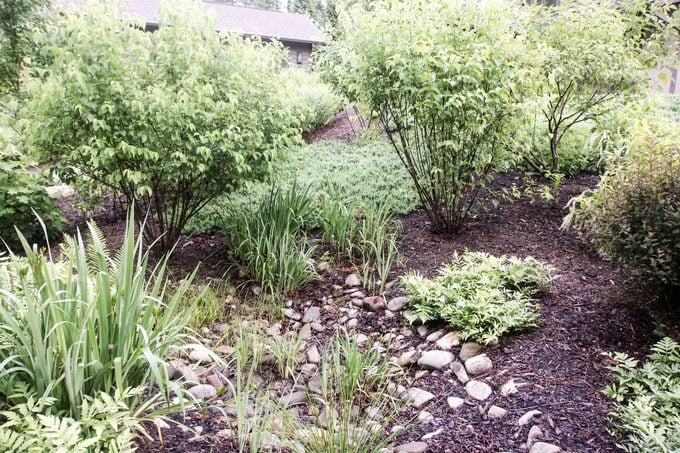
For best results, consider a few things up front. Note your soil type, the slope of the garden area, the distance from the house, the average rainfall for your area and the square footage of hard surfaces such as drives, walks or rooftops where you’re collecting water.
You’ll want to prepare your garden on a slight slope and at least 10 feet away from your house to avoid water collecting near your foundation. Also, avoid planting rain gardens over septic systems and under trees, where increased soil moisture could cause damage.
If possible, design the garden with the longest end perpendicular to the slope, increasing the border available to intercept water runoff. The garden should be about twice as long as it is wide. This provides plenty of room for plants to help slow down water and absorb it, as well as making it easier for you to come up with an attractive layout for the area.
Prepare the Site
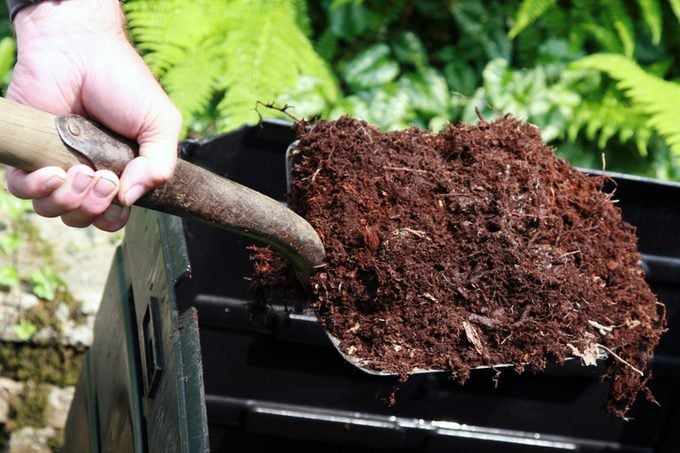
Most rain gardens should be 4 to 8 inches deep, but you’ll need to take the soil type, slope and size of your garden into account. Make sure the garden is level to avoid water pooling on one side.
You may need to move, excavate or add soil to make this happen. It also might help to create a small berm on the downhill edge of the garden to help contain water until it can naturally drain.
Dig several inches of compost or other organic matter into the top 6 to 8 inches of soil before planting. This will improve drainage in heavy soils and increase the water retention of fast-draining soils. This step is really crucial, because natural rainfall supplying water to your garden will often be irregular.
In the end, a well-designed garden will drain within 12 to 48 hours, avoiding standing water. This is important to the health of your plants and to prevent mosquitoes from breeding in your garden.
Psst—check out our guide on how to make compost.
Add Rain Garden Plants
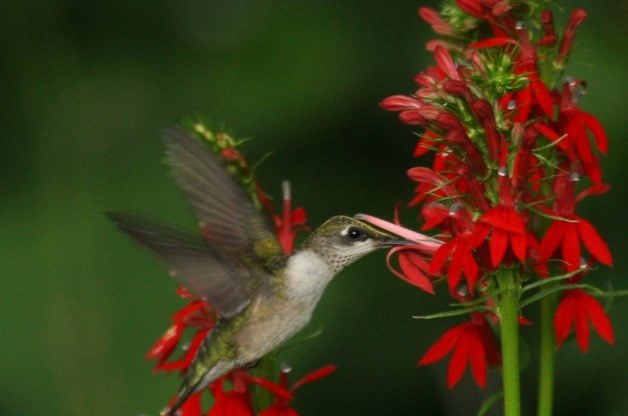
Select plants suited to temporary flooding and drought, since rain gardens are not water gardens, ponds or wetlands. They are designed to capture water during rainfall and quickly drain as plants absorb the moisture and as excess water moves through the garden soil to recharge the groundwater. Ultimately, your goal is to reduce your workload, not increase it.
Begin choosing plants by looking at the native plant species in your area. Plants native to prairies and swamps or other areas subject to flooding and drought are your best bets, but don’t stop there. Also check with nature centers, extension offices and your state department of natural resources to see if they offer regional rain garden suggestions as well.
As you go, use plants with a variety of bloom times for season-long color. Variety is a must. For instance, a mixture of sedges, rushes and other grassy plants make a dramatic backdrop for flowers.
Go lawn free: learn how to plant a prairie garden.
Best Perennials for Rain Gardens
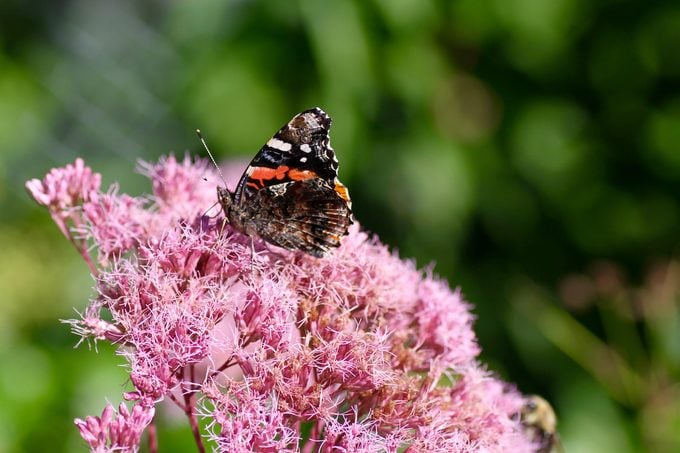
Here some colorful perennials to try:
- Cardinal flower (Lobelia cardinalis)
- Black-eyed Susan (Rudbeckia fulgida)
- Swamp milkweed (Asclepias incarnata)
- Swamp mallow (Hibiscus moscheutos)
- Joe Pye weed (Eupatorium)
- Sedges (Carex)
- Bluestar (Amsonia)
- Turtlehead (Chelone)
Mulch the Soil
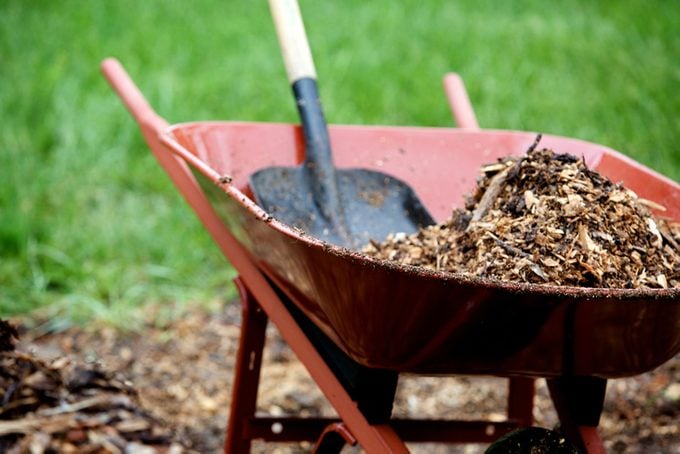
Place moisture lovers in the lowest areas of the garden that tend to stay wetter longer, and plant drought-tolerant species on the sides or edges of the garden.
Once all the plants are in, mulch the garden with twice-shredded bark. This mulch knits together and won’t wash away in the rain. Plus, mulching the soil prevents erosion, conserves moisture during dry spells and suppresses weeds. Be careful not to bury the crowns of the plants, though, because that can lead to rot.
Water Your Rain Garden
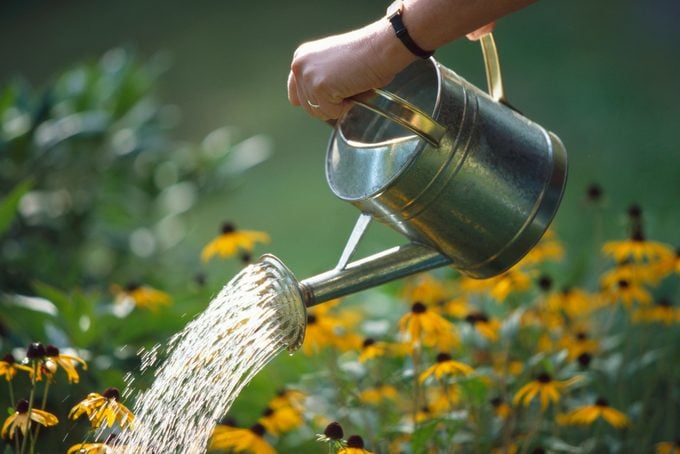
Just because you have a rain garden doesn’t mean you don’t have to water it. Make sure new plantings receive sufficient water, about an inch a week. Adjust the frequency based on the temperature and your soil type. New plantings, even drought-tolerant ones, need regular watering to encourage deep roots that are more efficient at absorbing water.
When is the best time to water plants?
Rain Garden Maintenance
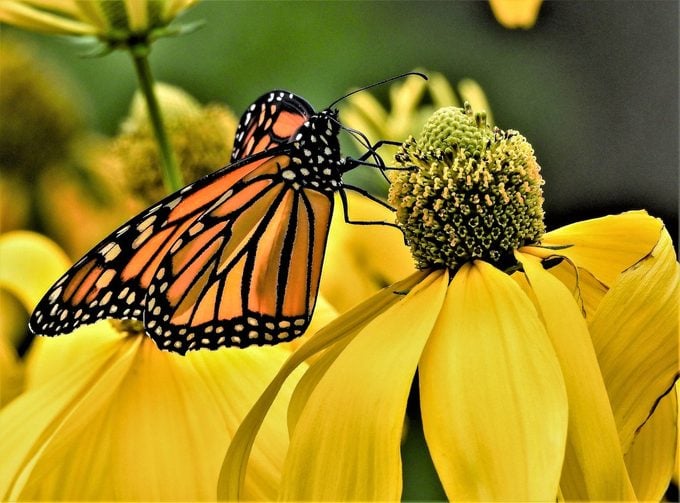
Weed regularly the first few years to allow your desirable plants to get established, fill in and outcompete future weeds. Remove dead growth at the start of each season and cut plants back as new growth begins. For an easy spring cleanup, use a string trimmer or mower you can set higher than the new growth. A hand pruner is best for thicker stems like sunflowers, asters and Joe Pye weed.
It’s not all work and no play, though. Rain gardens are relatively low maintenance once you get them installed and established. So kick back as you enjoy the birds, butterflies and neighbors that visit your garden. You can feel good about doing your part for the environment, one garden at a time.
4 Tips for a Successful Rain Garden
- Do the research and plan. Don’t think you can just put in a rain garden on a whim. It takes careful thought and planning.
- Location does matter. Make sure your garden is at least 10 feet away from the foundation of your house. Don’t plant it under trees, over septic systems or in areas where water might collect.
- Work with your soil. Amend the soil to improve drainage in heavy soils and increase the water retention of porous soils.
- Choose plants carefully. Be sure to pick varieties that tolerate both temporary flooding and drought.
Alternate Ways to Conserve Water in the Garden
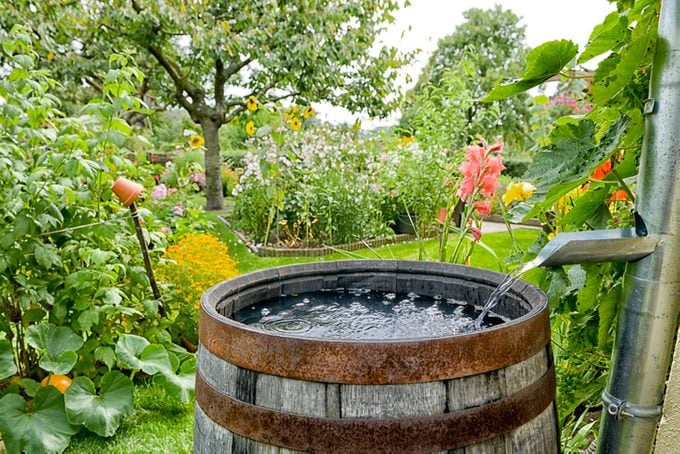
Don’t want to plant a rain garden? Here are some other ideas for conserving water.
- Install rain barrels and cisterns to capture water for use in the landscape
- Use water from dehumidifiers or air conditioners to water container plants
- Use drought-tolerant plants
- Group moisture lovers together
- Mulch soil to conserve moisture
Why Trust Us
For nearly 30 years, Birds & Blooms, a Trusted Media Brand, has been inspiring readers to have a lifelong love of birding, gardening and nature. We are the #1 bird and garden magazine in North America and a trusted online resource for over 15 million outdoor enthusiasts annually. Our library of thousands of informative articles and how-tos has been written by trusted journalists and fact-checked by bird and garden experts for accuracy. In addition to our staff of experienced gardeners and bird-watchers, we hire individuals who have years of education and hands-on experience with birding, bird feeding, gardening, butterflies, bugs and more. Learn more about Birds & Blooms, our field editor program, and our submission guidelines.
Sources
Melinda Myers, official gardening expert for Birds & Blooms
